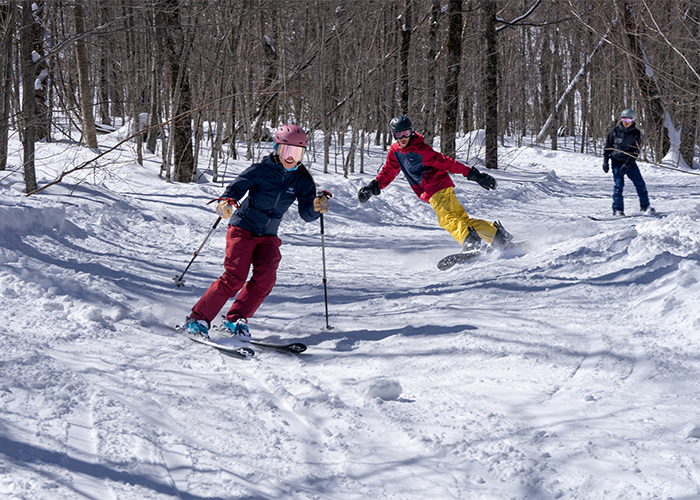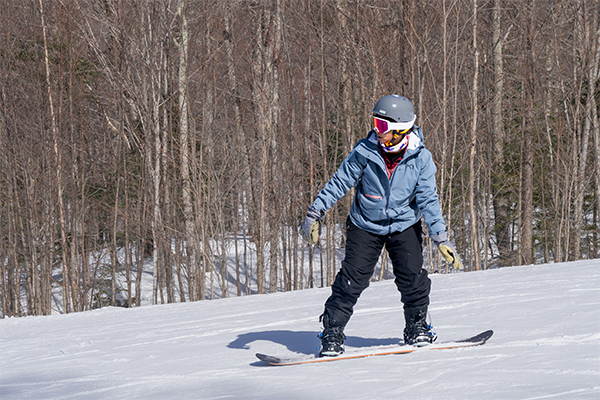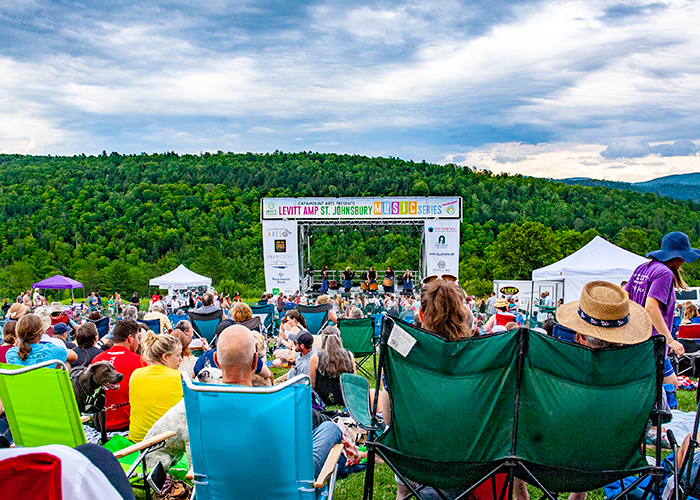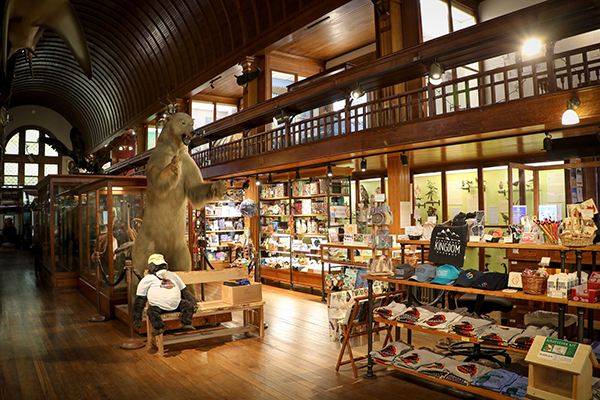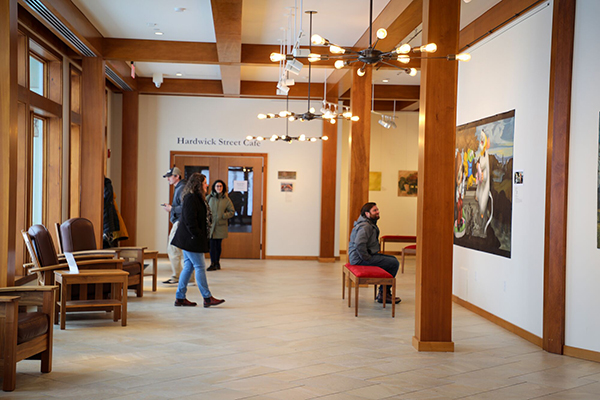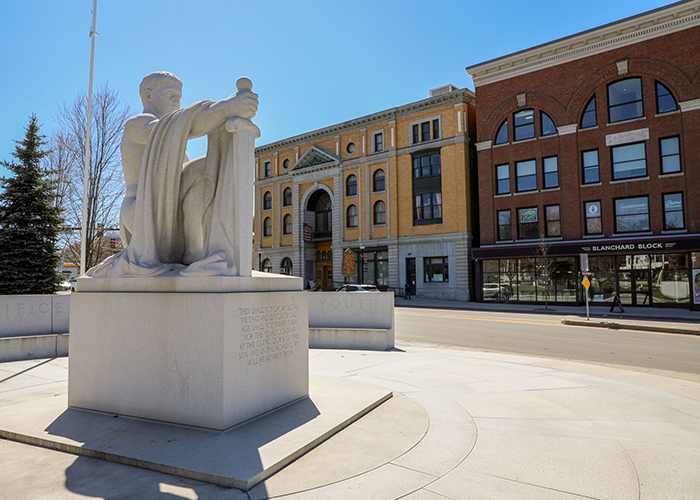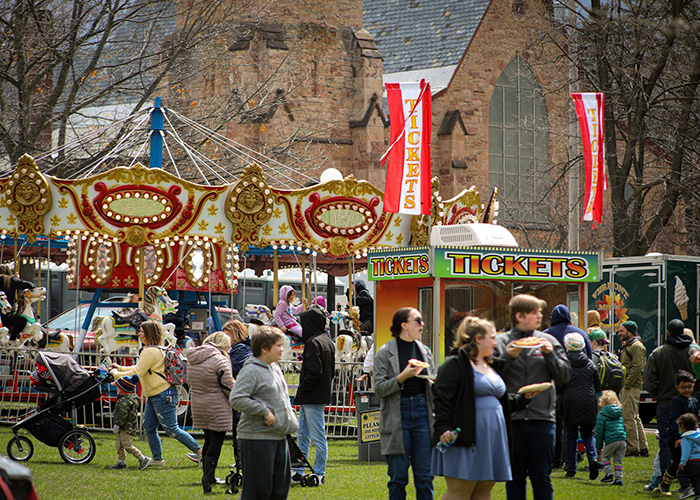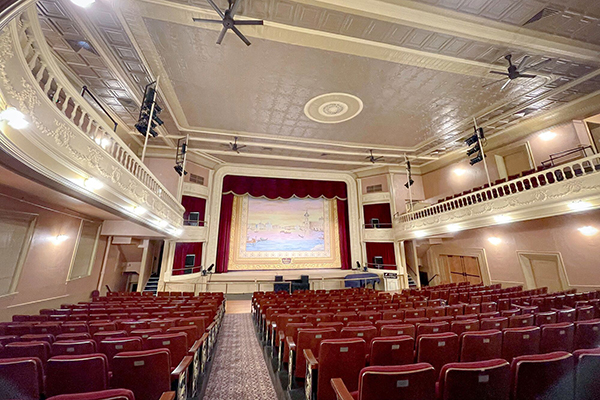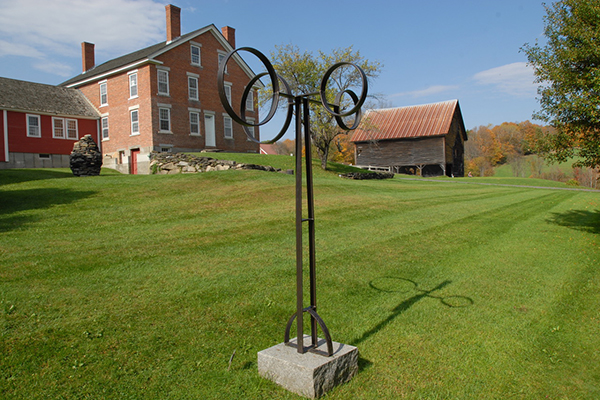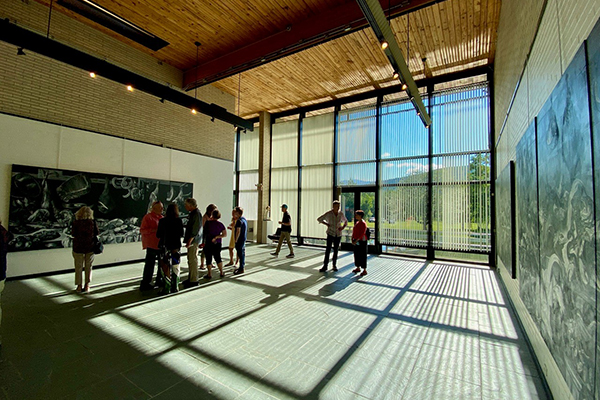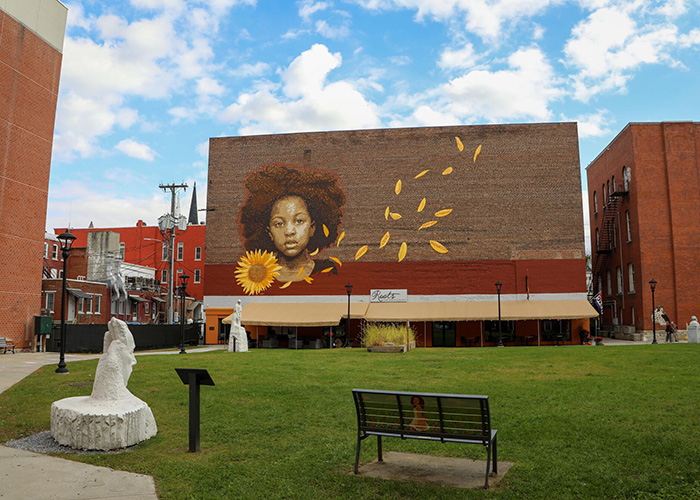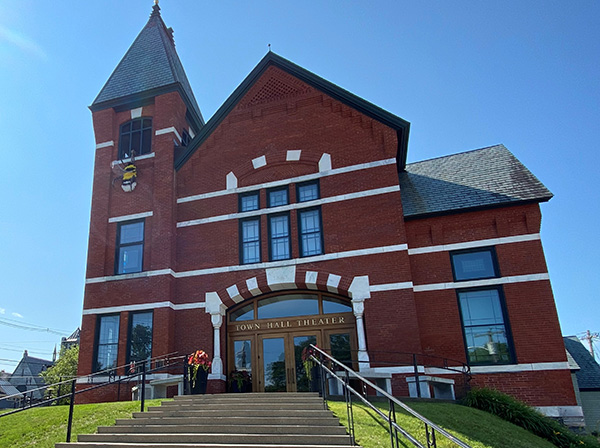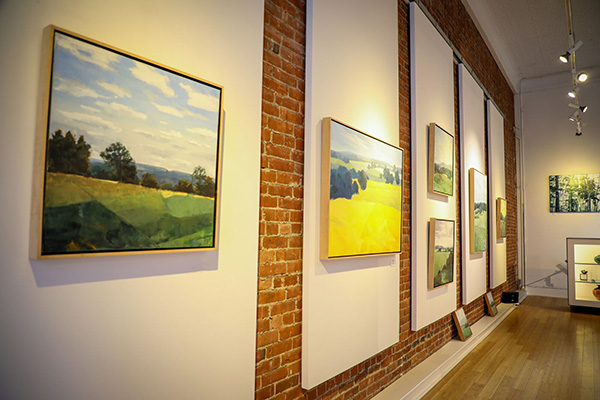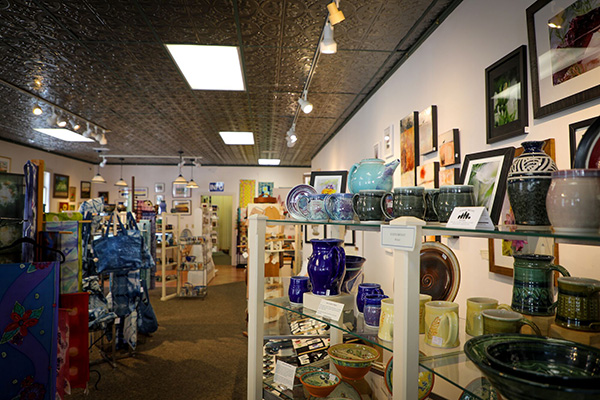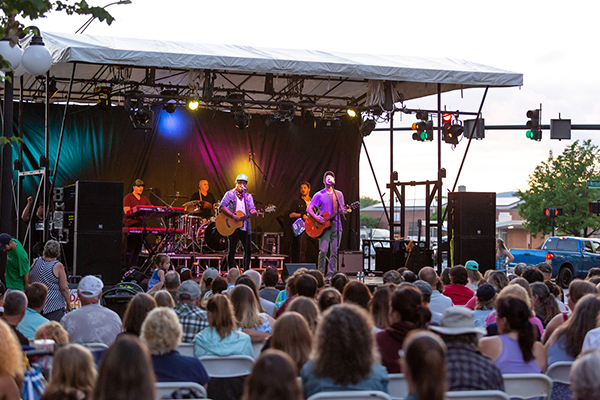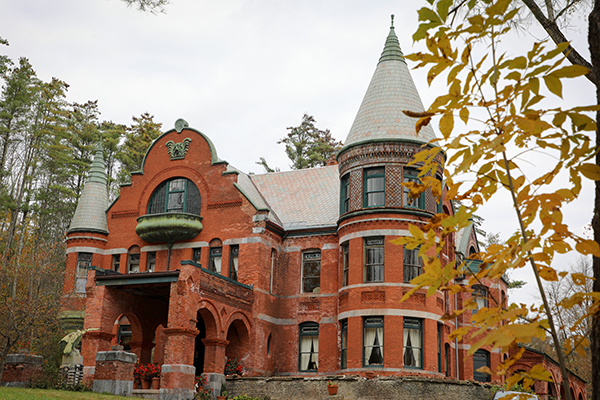
by Shelley Pembroke | May 8, 2025 | News, Rankings & Awards
“The Green Mountain State” isn’t just a nickname – in Vermont, it’s a way of life. According to WalletHub, Vermont is the No. 1 Greenest State in the U.S. for 2025, leading the way in organic farming and low greenhouse gas emissions.
Per capita, Vermont has the most organic farm acreage of any U.S. state, clocking in about 160,000 acres. That means about 13% of Vermont’s farmland is certified organic. But landmass isn’t the only thing that makes Vermont’s organic farming industry a heavyweight. Programs like Vermont Organic Farmers’ mentorship program connect farmers throughout the state, helping farms grow.
Organic farming promotes biodiversity, lays the groundwork for healthier soil, and reduces environmental pollution, since it doesn’t use pesticides, growth hormones, or petroleum-based fertilizers.
Vermont also has the lowest carbon dioxide emissions per capita in the U.S., and the third-lowest methane emissions per capita. Both carbon dioxide and methane are greenhouse gases that contribute to climate change, and Vermont has a goal to emit no more than 1.71 metric tons annually by 2050. The state is working toward that goal through methods like investing in renewable energy, promoting energy efficiency, and supporting carbon dioxide sequestration (removing the gas from the atmosphere and storing it instead in solid or liquid form.)
Vermont’s investment in clean vehicles is paying off, too. It has the highest number of alternative fuel stations per capita, and incentives continue to make it easier for people to make the switch to electric vehicles.
Read more about why WalletHub ranked Vermont No. 1 Greenest State this year.
Living in a state that values clean air and organic food and prioritizes environmental health can offer a high quality of life. Considering making the move? Learn more about relocating to Vermont.

by Shelley Pembroke | Jan 28, 2025 | Diversity, Outdoor Recreation
One Vermont group is cultivating an outdoor community for BIPOC Vermonters (Black, Indigenous, and People of Color), one person, one mountain, and one story at a time.
“Our work is all about creating these joyful and inclusive spaces for Black, Indigenous, and People of Color in mountain sports. Our mission is about breaking down barriers” and empowering communities of color to thrive on the ski slopes, says Unlikely Riders executive director Abby Crisostomo.
Crisostomo helped found Unlikely Riders in 2020. “We’ve all had those experiences of being the only one on the mountain.” Unlikely Riders’ work ensures “no one has to feel like they’re alone.”

Unlikely Riders spans disciplines and seasons to focus on skiing, cross-country skiing, snowboarding, backcountry touring, and mountain biking through instruction and community days. The organization also stewards a robust gear closet to outfit community members who may not own equipment, but want to get out there. In its fifth season, the gear closet, based at the group’s Burlington headquarters, has passed along 2,500 pieces of gear.
Mostly donated, offerings range from gloves and hats to skis, snowboards, and backcountry setups, complete with art by local BIPOC artists.
A recent addition to the Unlikely Riders programming lineup is a storytelling day before the ski and ride season even starts. Members come together for a community dinner, a handful share stories about what mountain sports mean to them, and others write down their stories in a notebook passed from table to table.
At the heart of all these ventures is the mission to build community by creating affinity spaces for groups historically underrepresented on mountains.
“If you don’t see yourself in these spaces, how do you know that you’ll belong there?” Crisostomo said.
That’s where community ski and ride days come in. These events bring BIPOC skiers and riders together at a ski area to have fun, form connections, take lessons, and enjoy delicious local food from BIPOC vendors.
The day starts with a big group welcome, complete with lots of laughter and warm, friendly greetings. Then, skiers and riders separate for lessons with BIPOC instructors, while others take to the ski slopes to ski and ride together. Sometimes, groups break out for affinity space rides, including those for LGBTQIA+, Spanish-speaking, and Black group members. After lunch and more skiing, people ski or ride as part of a big group for a photo, with one member holding the flag.

Throughout the day, smiles abound.
“What does it feel like to be the only one on the mountain? This is what the opposite of that feels like,” said Crisostomo. “All sorts of identities are represented here. It’s really special.”
Vermont has historically been among the U.S. states with the highest percentage of white people in the population, but Unlikely Riders’ work makes the state more accessible for communities of color, Crisostomo said.
“I hear anecdotes from folks at almost every ski and ride day [that] ‘I wasn’t finding my community; I was going to leave [Vermont],’ but then they found our programming, and they found people they can connect with outdoors and on the snow. I think that makes all the difference, that overall sense of belonging.”
Unlikely Riders communications director Miguel Reda says being part of a community creates a space to thrive in Vermont.
“If you don’t find that community that really wants to support and uplift you, people do leave [the state],” Reda says, and because finding that community can take time, people can miss out on what Vermont has to offer.
Not uncommon to happen on the trail, “People of Color see other People of Color and have an exchange for a minute, then white friends ask if they know you.” Not necessarily, but “there’s that connection when you’re both BIPOC,” Reda said. Unlikely Riders makes it easier to find those connections and build community here in the Green Mountain State.
Unlikely Riders also offers leadership training opportunities in wilderness first aid through SOLO Schools, Instructor certification from Professional Ski Instructors of America and American Association of Snowboard Instructors, and training through the American Institute for Avalanche Research and Education. Some Unlikely Riders members already work in outdoor recreation and want to hone their skills, while others are looking to volunteer or start down that career path. Still others take the training so they’re more prepared to help people on the mountain.

Up next for the group? Base Lodge. Unlikely Riders will undertake construction of a BIPOC-stewarded outdoor community center with cross-country ski trails, a rope tow, an event space, a gear closet, and more. A grant through the Vermont Outdoor Recreation Economic Collaborative will fund the planning stage, which involves a new project manager, a steering committee, site visits, and lots of community conversations.
The project will “represent this transformation in Vermont’s outdoor landscape where people can come together, learn, and be in the outdoors, all while centering BIPOC outdoors leaders,” Crisostomo said. “A whole generation of BIPOC Vermonters will grow up seeing themselves reflected from Day One.”
Those interested in joining Unlikely Riders, taking part in a community day, or keeping up with the organization should sign up on their website.

by Shelley Pembroke | Oct 31, 2024 | Arts
By Zara Johnson
Bordering Canada to the north and New Hampshire to the east, the Northeast Kingdom is home to a wealth of creative and musical opportunities for those lucky enough to visit this lush corner of the state. The Northeast Kingdom comprises three counties: Caledonia, Essex, and Orleans. The Kingdom is more remote and less populated than other zones, but there is no shortage of arts adventures to undertake.
Of the zone’s 52 towns, St. Johnsbury is the largest and functions as the arts and culture hub. Catamount Arts runs a series of performing arts events, including concerts, plays, and dance shows. It also screens films and runs two art galleries with rotating exhibits.
Catamount Arts also operates the JayLyn Art Tour. This self-guided outdoor art tour encompasses over 25 public artworks in St. Johnsbury and the nearby town of Lyndon. Walk between features in one town before taking a drive to explore the next.

Also not to be missed in St. Johnsbury is the St. Johnsbury Athenaeum, home to a small, ornate art gallery and library, The Fairbanks Museum and Planetarium, and Northeast Kingdom Artisans Guild, which is both a gallery displaying the work of local artists and a retail space with handmade goods.
Thirty minutes north, the town of Glover is home to two attractions with statewide reputations for being wacky and wonderful. The Museum of Everyday Life, self-described as an “ongoing revolutionary museum experiment,” explores the connection people have to everyday objects and presents these objects in a self-guided museum setting. Bread and Puppet Theater, originally of New York City’s Lower East Side, is a political puppet theater. The company runs outdoor shows every Saturday and Sunday during the summer. Check out their museum displaying an assortment of puppets and masks before or after the show or any day of the week.
Like Bread and Puppet, the Old Stone House Museum and Historic Village in Brownington also makes a good outing for the whole family. Book a tour ahead of time to explore the historic buildings tied to Alexander Twilight, the first Black college graduate in the U.S. Drop-in Friday programming offers kids activities throughout the summer.

Those seeking evening entertainment in the Northeast Kingdom have many choices to pick from: Summer Music from Greensboro, musical ensembles and clubs hosted by the Highland Center for the Arts in Greensboro, the Craftsbury Chamber Players summer season, and the free Levitt AMP St. Johnsbury Music Series hosted by Catamount Arts.
In Newport, Wednesdays on the Waterfront enlivens the town with weekly concerts during July. While you’re in town, be sure to stop by the MAC Center for the Arts, home to a gallery and storefront offering the work of local artists.
While the Northeast Kingdom is the most rural and sparsely populated area of Vermont, there’s no shortage of arts and culture opportunities for residents and visitors alike. Whether you’re exploring galleries in St. Johnsbury or venturing further afield to Bread & Puppet or a summer concert, this sweet corner of Vermont is not to be missed.
This story is brought to you in partnership with the Vermont Arts Council, working for a creative state. Explore Vermont’s arts sector and discover opportunities to engage with the arts, including classes and workshops, through this series of spotlights. The Vermont Creative Network is working to advance Vermont’s creative sector in communities throughout the state.

by Shelley Pembroke | Oct 31, 2024 | Arts
By Desmond Peeples
The corridor stretching from Grand Isle County through Franklin, Lamoille, and Washington counties includes picturesque landscapes and villages full of hidden arts gems. Explore historic and walkable downtowns like St. Albans, Waterbury, and Barre, and the cultural hub that is Vermont’s capital, Montpelier.
Grand Isle and Franklin Counties
Vermont’s northwestern most corner is one of its least populous, but the islands and peninsulas that make up Grand Isle County are still humming with creativity. The Island Arts Center based out of North Hero organizes community events regularly, including the Grand Island County Music Festival, and operates an art gallery at the Community Bank in South Hero.

Across the water from the islands on the mainland is Franklin County, the seat of which is beautiful St. Albans, where every April the Vermont Maple Festival celebrates quintessential Vermont food and culture. Whatever the season, visitors to St. Albans can enjoy the St. Albans Museum’s special and permanent exhibits on Vermont history and culture. Permanent exhibits include displays on railroad history, farming history and science, Abenaki heritage, the history of medicine, women’s rights, and more.
Lamoille County
Lamoille County may be best known for the skiers paradise that is Stowe, a scenic town brimming with restaurants, shops, and entertainment. High up adjacent to Mount Mansfield, which looms over the town, is Spruce Peak Arts, a performance venue with world-class programming year-round. Stowe is also home to The Current, an arts exhibition and education center with regular artist talks open to the public. About 25 minutes northwest of Stowe in Johnson is another Lamoille County arts hub, the Vermont Studio Center. This international residency program hosts artists and writers throughout the year, offers public readings and talks by renowned visiting artists, and operates a public gallery out of their main building.

Washington County
Coming from Stowe, your first stop in Washington County might be the neighboring town of Waterbury, where downtown art installations enliven strolls between the shops and restaurants.
Just 15 minutes down Interstate 89 from Waterbury is the capital region, where the twin cities of Montpelier and Barre form a cultural hub along the Winooski River. In Montpelier, visitors can enjoy the arts even under the golden dome of the state house building. The state house and its art galleries are always open to the public even during the legislative session. The Farmers Night Concert Series welcomes crowds to enjoy performances by an array of Vermont artists in the House Chamber. The grounds around the state house are often abuzz with creative activity, from the Saturday Farmers Market to song and dance-filled celebrations like All Species Day each May. In the summer, the first Friday of every month is Art Walk in downtown Montpelier, when galleries, shops, and venues stay open for special events, and the streets bustle with activity into the night.

Down the river in Barre, the town’s history as a granite capital is reflected in the local art, with granite sculptures dotting the town and making an unusual tourist destination out of the Hope Cemetery, where many of the headstones are carved into unique and personal works of art. In downtown Barre, art lovers will enjoy Studio Place Arts‘ three floors of rotating exhibits featuring local and regional artists. The historic Barre Opera House hosts 70-100 performing arts events each year, from internationally renowned acts to local stars. Beyond the urban centers of Washington County are hidden gems like the Kent Museum in Calais, where contemporary art exhibitions are presented in a mid-19th-cenury historic hamlet setting.

Beyond the urban centers of Washington County are hidden gems like the Kent Museum in Calais, where contemporary art exhibitions are presented in a mid-19th-century historic hamlet setting. Another must-visit for contemporary art lovers, but in a very different setting, is the Bundy Modern, a gallery designed in the Bauhaus style and set among a landscaped sculpture garden in the woods of Waitsfield. About 30 minutes south of Montpelier on scenic Route 100, Waitsfield is the heart of Mad River Valley and home to a variety of galleries and shops. Check out Mad River Valley Arts for local exhibits and arts events.
This story is brought to you in partnership with the Vermont Arts Council, working for a creative state. Explore Vermont’s arts sector and discover opportunities to engage with the arts, including classes and workshops, through this series of spotlights. The Vermont Creative Network is working to advance Vermont’s creative sector in communities throughout the state.

by Shelley Pembroke | Oct 28, 2024 | Arts
By Zara Johnson
Bordered by Lake Champlain to the west and the Green Mountains to the east, Addison County bursts with natural beauty, with an arts and culture scene to match. To the south, Rutland County is home to one of Vermont’s biggest cities, sprinkled with marble and historic buildings to explore.

Arts of Addison County
Middlebury is Addison County’s largest town and is packed with places to explore. Downtown, browse at Edgewater Gallery or stop by the Henry Sheldon Museum of Vermont History, housed in a historic Federal house. The museum’s permanent collection of furniture, documents, and personal affairs covers the history of Addison County and Vermont, alongside temporary exhibitions. Head up the hill to the Middlebury College Museum of Art to view their diverse permanent collection and special rotating exhibits.

For those interested in performance, Middlebury’s Town Hall Theater puts on more than 150 events a year, including plays, concerts, and classes. Middlebury’s Festival on-the-Green is also not to be missed. For a week each July, music floats through downtown from 12 p.m. until after sunset. In August, the annual Middlebury New Filmmakers Festival screens more than 120 films from budding filmmakers.
In nearby Ripton, the Robert Frost Interpretive Trail offers the opportunity to engage with Frost’s work in the area where he wrote and taught. Find his celebrated poetry posted at various points along this easy trail.
Another opportunity for outdoor engagement can be found in Bristol every summer on Wednesdays, when the Bristol Town Band plays in the park. One of Bristol’s charming storefronts belongs to Art on Main, a non-profit gallery selling the work of around 75 Vermont artists. Stop in for a mug, a quilt, or a carving to mark your time in Addison County.

Marble and More Magic in Rutland
The city of Rutland, seat of its namesake county, sparkles with arts and culture to engage with. Get a taste of the downtown at Rutland’s Friday Night Live summer concert series, offering live music, food trucks, and children’s activities. In August, Rutland’s fairgrounds spring into action for the Vermont State Fair, with quilts, paintings, handiworks and more on display.

The beautiful Chaffee Art Center, located in a historic Victorian house, offers a gallery and shop filled with work by local artists. Don’t miss a self-guided wander through the home and gardens. In August and October, the center brings the annual Art in the Park festival to Main Street Park with more than 6,000 attendees. Throughout the year, find Chaffee’s programming for kids, teens, and adults on its website.
The Rutland area is known for its brilliant white marble. Check out the self-guided Sculpture Trail to explore the marble sculptures that decorate the downtown.
For even more marble, explore the sculpture garden and trail at Rutland’s Carving Studio and Sculpture Center. The center offers workshops and classes, as well as an indoor gallery space. If you’re lucky, you might spy the sculptors in action!
Elsewhere in Rutland County, take a guided tour of historic Wilson Castle or head to the Brandon Artists Guild, a cooperative gallery of 30+ artists in downtown Brandon, for stunning creations ranging from ceramic pots to fiber arts to stained glass.

This story is brought to you in partnership with the Vermont Arts Council, working for a creative state. Explore Vermont’s arts sector and discover opportunities to engage with the arts, including classes and workshops, through this series of spotlights. The Vermont Creative Network is working to advance Vermont’s creative sector in communities throughout the state.


